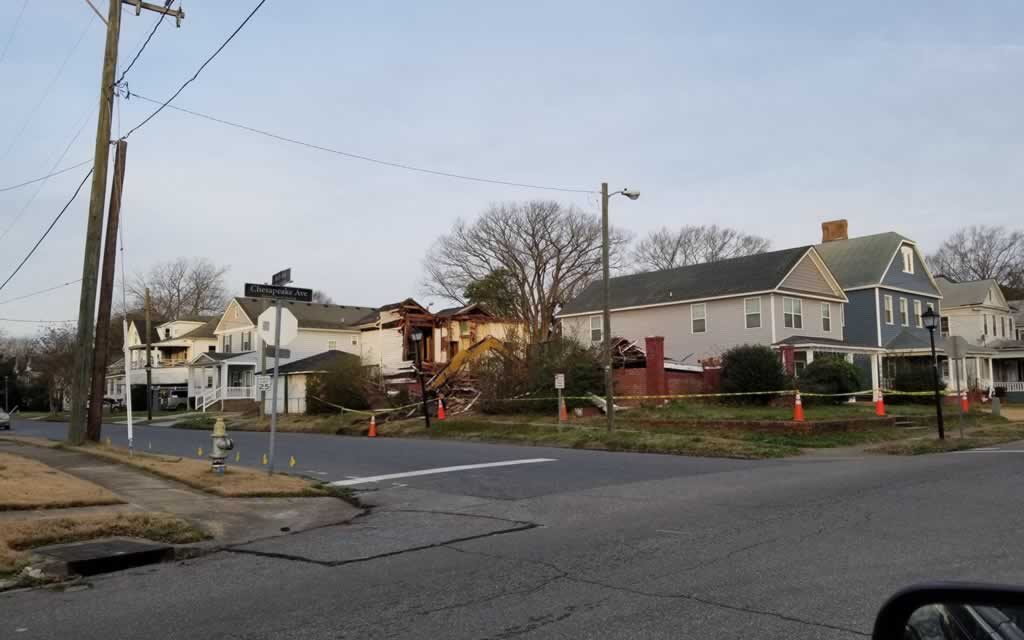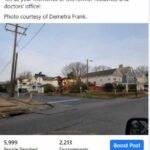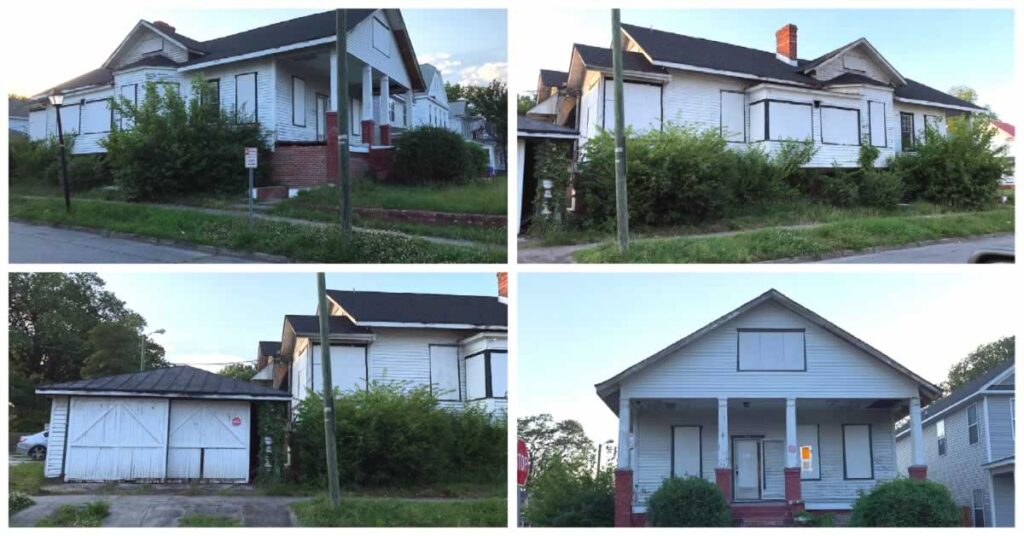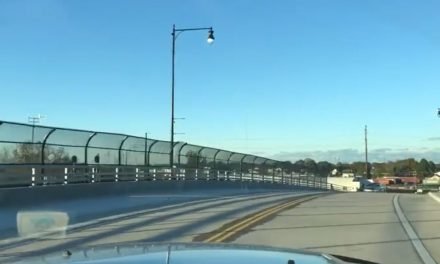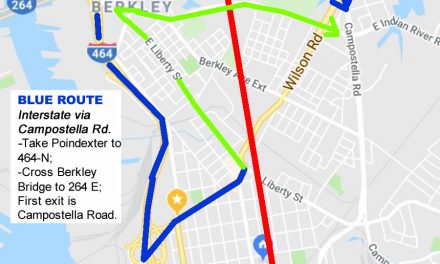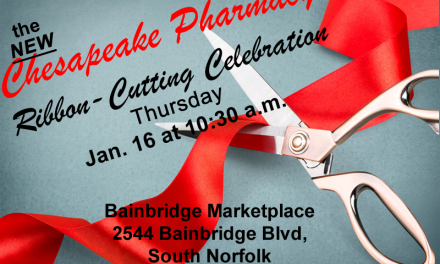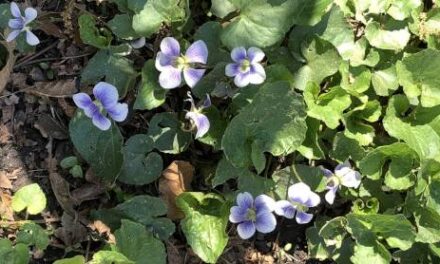By Suzy Loonam
SOUTH NORFOLK, Va. — A dear Facebook follower sent this photo (above) and asked us to write a history of the legendary doctors’ office at Chesapeake Avenue and Holly Avenue.
We being transplants and not particularly motivated or qualified to write anything at the time, we said we’d post the picture on our Facebook page and let the comments write the history. And, boy, did they ever! The post reached 5,967 people, with 2,209 engagements, 105 comments, 87 reactions, 27 shares (and counting). CLICK HERE to go to the actual post on Facebook.
Here’s what we learned from the comments …
and other fun facts and opinions we threw in along the way:
The building at 1446 Chesapeake Avenue seems to be most famously remembered for being the medical office of Dr. W. Stanley Jennings, however, there were doctors before him who operated in the same location.
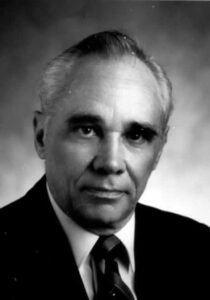
Dr. W. Stanley Jennings, South Norfolk’s family doctor, was instrumental in establishing Chesapeake’s first hospital.
Jennings was a popular doctor who was born in Old Norfolk County and served the community of Chesapeake as a dedicated family physician for 55 years. He died in 2014 at his home on Virginia Avenue at the age of 87 and is known as the founding father of Chesapeake General Hospital. Indeed, his South Norfolk office was a noteworthy landmark in the community.
Jennings’ obituary states “He was a graduate of Great Bridge High School, attended the Norfolk Division of the College of William and Mary, the University of Virginia and graduated from the Medical College of Virginia. He was a World War II veteran of the U.S. Army, where he served as a medic. Most of all, Dr. Jennings will be remembered as a driven, selfless, generous, passionate physician and family man. All these qualities contributed to his vision and dogged determination to bring a hospital to the people of Chesapeake. A First Citizen of Chesapeake, with many lifetime accomplishments, he leaves a legacy of service and humility to all who knew him.”
He was such a prominent figure in our history that the Virginian-Pilot also ran the story of his death and his huge role in community health care, particularly in South Norfolk, and in the founding of the new city of Chesapeake’s first hospital.
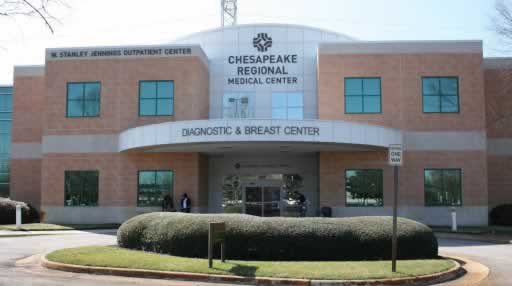
Today, the W. Stanley Jennings Outpatient Center is vital to the health and welfare of the people of Chesapeake.
Many people were sad to see the building has been torn down. We could almost feel their pain. Others were surprised to see the building suddenly gone — and on a Sunday, no less! However, records show there were discussions about this building coming down as early as April 2020. But, hey — in the year of our Pandemic from Hell, it’s easy to forget things.
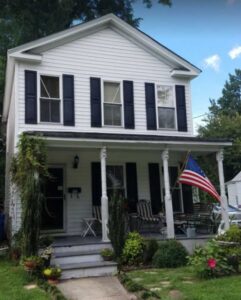
This is a typical “stick house” in South Norfolk. In fact, it’s OUR stick house in South Norfolk. It’s nice, but maybe not Chesapeake Avenue nice.
Some posters asked “what’s next?” while others predicted a fate so awful, so horrific; we fear the mere mention of the words may bring forth the loathsome event. Will the house be replaced with a STICK HOUSE? Gasp. We shudder to think!
STICK HOUSE: A stick house is a house made of wood. In South Norfolk, stick houses are the 2-story, 3-bay dwellings that are typically long and thin, much like what is known as “shotgun houses” in other areas of the country.
Seriously, we resisted the urge to be offended with that honorable un-brag, so-to-speak, as we, your humble publishers, live in a stick house which we rather enjoy. However, we understood the intent of the remark.
When South Norfolk was platted in about 1900, there was a plan, of sorts; a pattern of arranging homes that served the social norms of the day. Remember, there were no cars until 1910. South Norfolk was designed to be a pedestrian community. Large lots to hold large homes were drawn on the main streets, Holly and Chesapeake. This is where South Norfolk’s wealthy and elite professionals — doctors, lawyers, builders, engineers, shipbuilders, educators — made their homes.
Lots and homes on surrounding streets were smaller and more affordable to tradesmen and the working classes, who needed to be near the more noble residents to serve them, or work in nearby businesses that served them. And this is why you don’t see many stick houses on Holly or Chesapeake. Not that it would cause the world as we know it to end, but we can all probably agree that a stick house would be out of place on Chesapeake Avenue.
Few posters, if any, speculated that any replacement could meet or exceed the grandeur of this locally significant landmark that many feel was unnecessarily lost to time and neglect.
Could it have been saved? Should it have been saved? And who shall we blame? Some blamed the city. Some blamed the owners. Some just complained about an unnamed entity called “they.”
In our 16 years in South Norfolk, we have seen homes fall into disrepair through neglect as homes are rented and not maintained. We agree this is a less-than-perfect situation for a National Historic Landmark Community such as South Norfolk. How does this happen? And how do we stop it? We don’t know the answers to this dilemma.
But we learned from that photo that we aren’t alone in wondering about the loss of this particular building, a space so decidedly imprinted into the memories of so many longtime residents, its loss (or happy removal) affects us all emotionally in one way or another. This was South Norfolk’s primary medical center and a center of activity for the entire community from an early time. And now, it’s gone.
Others were not saddened at all. “It’s about time!” wrote one poster, and “Finally gone!” chirped another. But many more complained of the loss of this structural relic from South Norfolk’s past. There seemed no shortage of memories.
Many recalled getting their physicals there to play sports at school. It’s a heartwarming reminder that playing for Oscar Smith is a time-honored tradition in South Norfolk. It’s likely sports were as important to the doctors as they were to the community, and one person noted that she was not charged for her kids’ physicals.
So many told stories of parents taking them there — cigarette smoke billowing in thick clouds from the waiting room and long waits for the doctor.
Dr. Jennings was dedicated, but he was spread pretty thin, as many reported waiting 12 hours or more to see him. One person said she brought breakfast and lunch to her grandmother as she waited to see the doctor. Someone told us privately, “and probably dinner, too.”
We found it amusing when a poster told of a time when waiting patients saw the absent doctor at a game on the television as they sat waiting in the waiting room.
Nurse Bradshaw, the nurse with the scary shots and a big heart, seems to have lost her first name to time. From the posts, we can conclude her name was Bessy, Betsy or Betty. We “hear tell” that she was short and stocky with dark hair and a mustache. Apparently, she used shots extensively on patients, “but you always got well!” said one poster.
Alan Smith gave us a brief history of his relatives who lived nearby:
“The bluish house 2 doors down was built by my great grandfather, Virginius Lycurgus Smith. He also built the home to the right (a duplex) for a son & daughter to live in.”
“The son who lived there, Elwood Hope “Mike” Smith, played professional baseball (outfielder) for the New York Giants in 1927, and after a 12 years in professional baseball, returned to South Norfolk to eventually become its Commissioner of Revenue. My great grandfather also built a home for another son, Albert Colan Smith, behind these 2 homes on Jackson St.”
“He was my grandfather and his wife, Merle (Meemaw) would walk to Dr. Jennings office at this location. Sometimes she would wait hours to see him. I was just a kid (maybe 4 or 5) but I remember it was always very busy. Ironically, my late father was in the Sentara Norfolk General ER earlier this year and Dr. Jennings’ grandson was the medical resident who treated my dad. He was superb!”
Dr. Jennings delivered several people as babies who commented on the posts as grown-ups. He even delivered some of them at their homes. And many, many people said Dr. Jennings was a good doctor with a kind and generous heart.
And before Dr. Jennings, Mike Goodwin (yes, Murray’s brother) said, it was Dr. Bocock.
“I used to play there with his son Dickie, they lived above the office for years and then built a house in Indian River, Sparrow Road, in the 1960s, Dickie was the drummer for the hottest band in Tidewater, The Swinging Machine, Dickie had 2 brothers, Jimmy and Tommie,” Goodwin commented on the post.
Folks told some great stories. Especially noteworthy was the story one woman told about going to the doctor with laryngitis. She waited so long to see the doctor, her voice came back so she left.
The amusing came with the odd as posters shared some unusual memories, like the smell of the office or the creepy eyebrows of Dr. Myers. And poor Bob Bailey said he was attacked by a neighbor’s dog when he was about 6, and Dr. Jennings stitched him back together. He didn’t mention any wait.
We’d like to thank everyone for their memories of the old doctors’ office at Chesapeake and Holly, and we wish you all a safe, happy and HEALTHY 2021! We’re going to open this post to comments if anyone is so inclined. Comments are monitored so be nice or be censored.
Your publishers,
Suz & Dan Loonam

